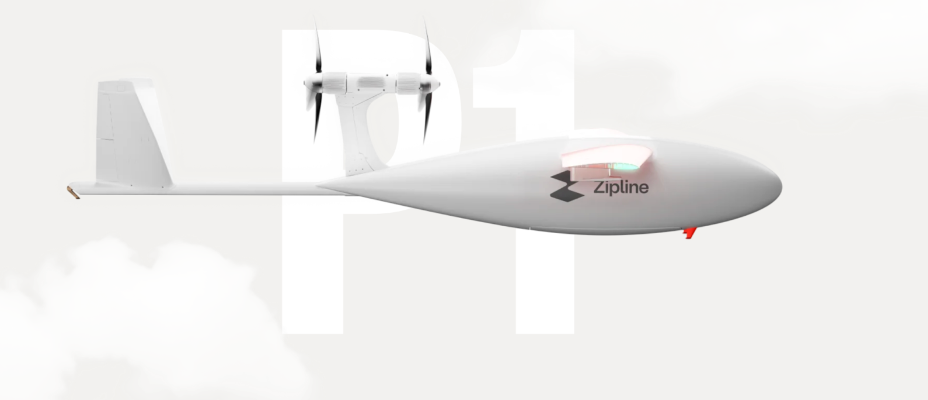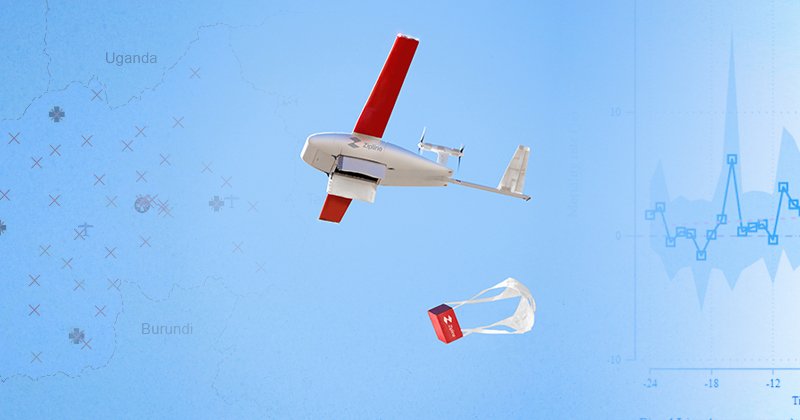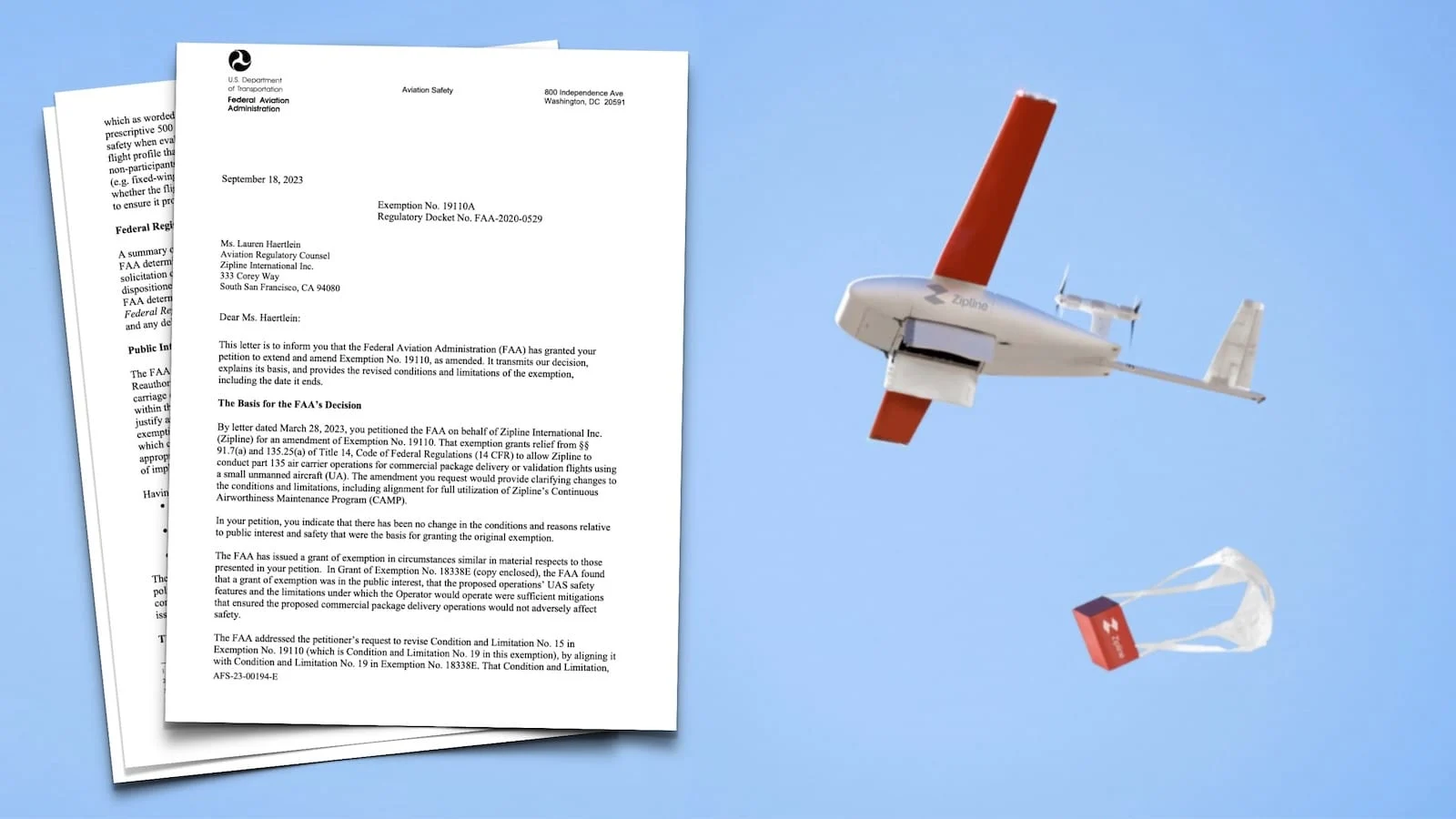Introduction:
Drone delivery has long been a promising technology, and in 2024, Zipline, a San Francisco-based drone delivery company, is poised to propel this innovation to new heights. The company plans to launch projects in several U.S. cities, with a vision to cover 15 urban areas by 2025. This article explores the pivotal role of regulatory changes, technological advancements, and the challenges faced by Zipline as it seeks to revolutionize the drone delivery landscape.
 Regulatory Shifts Paving the Way:
Regulatory Shifts Paving the Way:
Until recently, drone delivery was constrained by stringent regulations, requiring visual observers along the route. However, a significant shift occurred in September when the Federal Aviation Administration (FAA) granted exemptions to Zipline and two other drone firms, including commercial deliveries without the need for visual observers. This regulatory change is a game-changer, setting the stage for widespread adoption of autonomous drone delivery.
Zipline’s Vision for Sustainable Delivery:
Zipline envisions leveraging this regulatory breakthrough to scale its operations, offering on-demand delivery of various goods in an environmentally conscious manner. The company highlights a 97% reduction in emissions per delivery compared to traditional gas-powered vehicles. With a commitment to delivering food, medicine, and consumer goods, Zipline aims to reshape logistics, providing millions of Americans with efficient and eco-friendly delivery services.
Challenges of Exemptions vs. Regulations:
While the FAA exemptions mark a significant milestone, industry experts, including Adam Robertson from Fortem Technologies, emphasize the need for enabling regulations rather than relying on exemptions. The slow progress in regulatory frameworks has been a persistent challenge, impacting the development of the drone delivery industry. Robertson contends that for the industry to flourish, it requires comprehensive regulations, ensuring safety and integration into national airspace
Technical Hurdles and Air Traffic Control Concerns:
Scaling drone delivery operations faces technical challenges, including cost-effectiveness and limitations imposed by FAA rules. Rob Enderle points out concerns about air traffic control, questioning the ability of the existing system to manage the potential influx of thousands of drones without centralized control. Overcoming these technical hurdles is crucial for Zipline and the drone industry as a whole.
Consumer Demand and Industry Skepticism:
The potential demand for drone delivery services has garnered skepticism from some industry analysts. Mark N. Vena questions the urgency of drone implementation for routine deliveries, given the efficiency of existing systems. However, Zipline’s success in swift meal deliveries and its unique approach to minimizing porch theft showcase specific scenarios where drone delivery addresses consumer needs effectively.
Economic Viability in the Last Mile:
The last mile of delivery, representing the crucial leg from distribution centers to consumers’ doorsteps, has long been a focal point for innovation within the logistics sector. Amidst this landscape, the advent of drone technology is poised to revolutionize the economics of the last mile, bringing about a paradigm shift in efficiency, cost-effectiveness, and overall delivery dynamics.

- Challenges in the Traditional Last Mile: Traditional last-mile delivery methods often grapple with challenges such as high operational costs, labor-intensive processes, and increasing concerns related to theft and violence. With conventional methods relying on large trucks and human-centric approaches, the last mile has become a bottleneck, both in terms of time and resources. Drone technology emerges as a disruptive force, promising to address these challenges and redefine the economics of final-mile logistics.
- Weight and Cost Optimization: One of the key elements contributing to the economic viability of drone delivery in the last mile is its ability to handle packages weighing up to 10 pounds. This weight range encompasses a significant portion of deliveries, with 90% of packages falling under this threshold. Drones offer a more efficient and cost-effective alternative for these lightweight deliveries, potentially reducing the costs associated with traditional, human-driven methods.
- Cost Disruption: Tom Walker, CEO of DroneUp, highlights the transformative potential of drones by emphasizing the substantial cost disruption they bring to the last-mile equation. The cost per delivery, which traditionally ranged from $16 to $20, is projected to drop significantly to less than $3 with the introduction of drone technology. This cost reduction is a game-changer, making last-mile delivery economically viable on a scale previously deemed challenging.
- Reducing Dependency on Aging Infrastructure: Drone delivery’s economic appeal is further accentuated by its capacity to bypass challenges associated with aging infrastructure. Large trucks navigating through congested roads and deteriorating infrastructure incur not only time-related costs but also contribute to increased wear and tear. Drones, with their aerial capabilities, circumvent these challenges, offering a more direct and streamlined approach that significantly mitigates dependence on aging and inefficient infrastructure.
- Enhancing Efficiency and Delivery Speed: Efficiency gains in the last mile are not limited to cost reduction alone. Drones bring a level of speed and precision that is unparalleled in traditional delivery methods. With the ability to navigate airspace directly to the consumer’s doorstep, drones drastically reduce delivery times. Tom Walker predicts that by Q3 of 2024, visual out-of-sight deliveries will become a reality, further amplifying the efficiency and scalability of drone operations.
- Minimizing Porch Theft and Ensuring Security: Beyond cost and efficiency considerations, drone delivery introduces a security dimension that resonates with consumer concerns. Walker notes that two in five Americans have experienced porch theft, a prevalent issue with traditional doorstep deliveries. Drones, by delivering to designated backyard locations, eliminate porch theft concerns, providing an added layer of security and enhancing the overall appeal of this innovative delivery method.
Conclusion:
As Zipline prepares to launch drone delivery projects in the U.S., the industry stands at the cusp of a transformative period. Navigating regulatory changes, addressing technical challenges, and demonstrating the economic viability of drone delivery in the last mile are crucial steps for Zipline and the entire drone delivery sector. The outcome of these endeavors could reshape the future of logistics, offering consumers efficient, sustainable, and secure delivery options.
Read more: